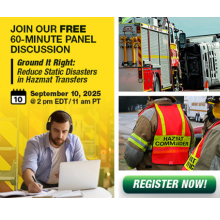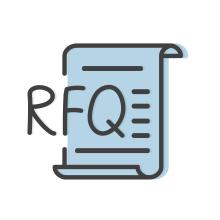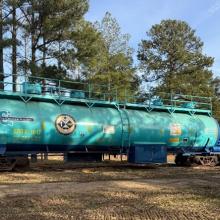
Blog

Ground It Right: Reduce Static Disasters in Hazmat Transfers
| by AEMC Instruments
Don't let a preventable spark become your next emergency. Join our expert-led discussion to uncover the why and how behind proper grounding practices in high-risk environments. Whether you're in emergency response, industrial safety, operations, or the oil and gas industries transporting petroleum distillates or esters, this webinar will equip you with the knowledge to ground it right - and protect what matters.

Calling All Fabricators: TRANSCAER Seeks Vendor for New Hazmat Training Trailer Prop
| By: Erica Fischer, Director, Training, Outreach and Partnerships
TRANSCAER is excited to announce an open Request for Quote (RFQ) for a Cargo Trailer Rollover Training Prop, designed to enhance hazmat training for highway and rail response.
We’re looking to partner with an experienced fabricator to design and build a portable training trailer that simulates realistic hazmat scenarios including rollover events, valve and dome leaks, bonding/grounding mishaps, and more.
This prop will be utilized to provide immersive, scenario-based training for first responders, with particular emphasis on hazmat incidents involving cargo tank trailers.
The prop should include:
Leak simulations from multiple fittings
Flammable gas dome and corrosive chemical housings
Bonding and grounding features
Onboard air system for leak simulations
Confined space entry point
Optional chlorine one-ton training end
Mounted on a towable trailer for maximum mobility
Corrosion-resistant build and custom decals
We have a current total budget of $148,795, which includes fabrication, materials, delivery, and branding.
Interested in quoting or learning more?
Download the RFQ here. We welcome proposals through Friday, July 25.

CI Donates Training Tank Car to Mississippi State Fire Academy
| Robyn Kinsley, Vice President, Transportation, Emergency Preparedness, & Regulatory Affairs
In 2014, CI put a training tank car into service to enhance the experience at CI’s hands-on emergency response training events. This tank car has served its purpose well for the last ten years and has finally reached its time to retire. CI’s Emergency Preparedness Issue Team chose to donate the training car (ERTX 1017) to the Mississippi State Fire Academy (MSFA), which has been an incredible partner in hosting CI’s annual CHLOREP Team training every year since 2007. ERTX 1017 arrived at its final resting place earlier this month. MSFA is very grateful for this significant contribution, and this donation further strengthens CI’s relationship with the academy. MSFA can now use this equipment in their hazmat training classes for first responders, as will industry teams that also train at the academy. In addition, CI will have continued use of the tank car during the annual CHLOREP Team Training. 2025 CHLOREP Team Training students will get the first opportunity to be hands-on with the training car as part of the CHLOREP Training curriculum since its arrival at MSFA.
Solutions for the Fire Service: Recruitment and Training in Modern Times
| By Ken Willette, Executive Director, North American Fire Training Directors (NAFTD)
We are currently facing a significant challenge within the fire service - recruiting and retaining qualified firefighters. When I speak with Metro chiefs, they express that in the past, they received hundreds of applications for job openings. Now, they're lucky if they receive dozens. Similarly, my fellow chiefs from mid-sized combination departments used to have dozens of applicants, but now they're down to just a few. On the other hand, chiefs of volunteer departments and rural communities are grappling with a lack of applicants for vacant positions and an aging workforce. The uncertainty looms over us as we wonder when this situation will improve and when we can once again expect a pool of qualified candidates.

Is it Worth the Risk?
| Tom Miller, TRANSCAER West Virginia State Coordinator
First Responders are used to facing and taking risks every day – that is a part of the job description. We use our knowledge, training, and experience to make critical decisions in often challenging situations. We often rely on communication centers, on-scene resources, and other available intelligence to help us make those decisions. Effective risk assessment, management and planning can help prevent bad situations from getting worse and decrease the threat potential (life, property, environment) posed by an event.
Find Training Events Near You
- United States
- Alabama
- Alaska
- Arizona
- Arkansas
- California
- Colorado
- Connecticut
- Delaware
- Florida
- Georgia
- Hawaii
- Idaho
- Illinois
- Indiana
- Iowa
- Kansas
- Kentucky
- Louisiana
- Maine
- Maryland
- Massachusetts
- Michigan
- Minnesota
- Mississippi
- Missouri
- Montana
- Nebraska
- Nevada
- New Hampshire
- New Jersey
- New Mexico
- New York
- North Carolina
- North Dakota
- Ohio
- Oklahoma
- Oregon
- Pennsylvania
- Rhode Island
- South Carolina
- South Dakota
- Tennessee
- Texas
- Utah
- Vermont
- Virginia
- Washington
- Washington, D.C.
- West Virginia
- Wisconsin
- Wyoming
- Canada
- Mexico